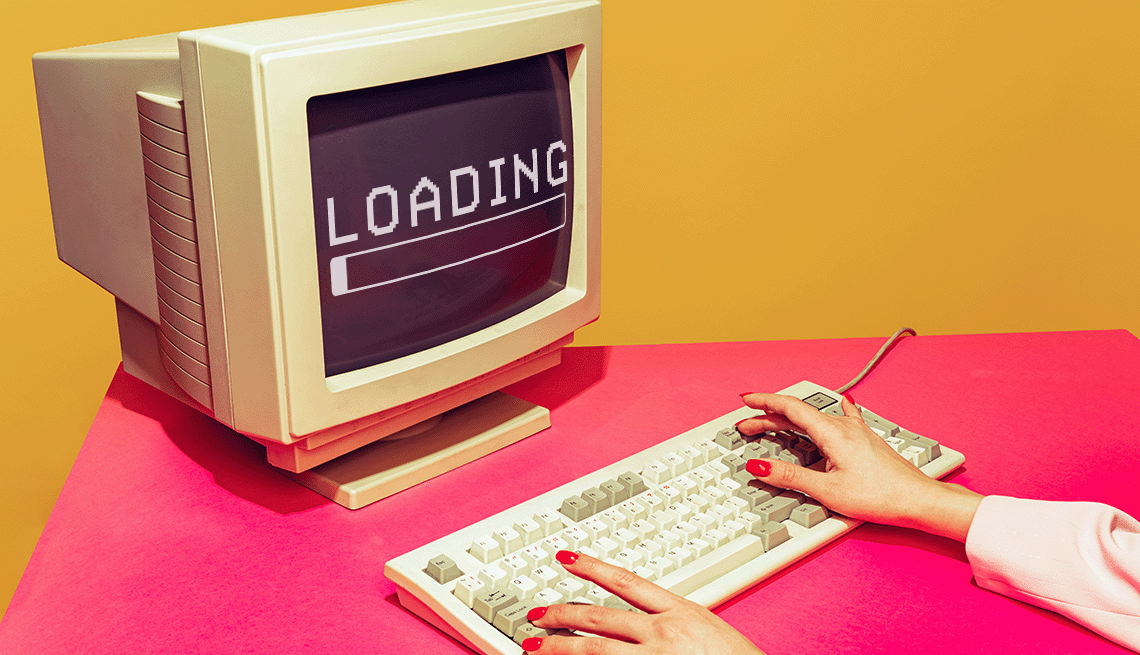AARP Hearing Center


My computer takes forever to boot up, and then it’s really slow even after it does. Is it time to put it out to pasture?
I know the frustration when a PC or Mac is getting long in the tooth and you feel like the machine is well past its prime.
But before retiring the computer and investing in a potentially expensive replacement, consider factors beyond old age that might explain the draggy performance. In some cases, the glitches can be fixed and could prolong your computer’s life just a little more.


AARP Membership— $12 for your first year when you sign up for Automatic Renewal
Get instant access to members-only products and hundreds of discounts, a free second membership, and a subscription to AARP the Magazine.
Look at your computer’s sinuses, gut, brain, age
Most often, some sort of strain on resources causes a sluggish computer. A few common reasons:
Stuffy drive. Even if you increasingly rely on a subscription to a cloud internet storage service, the hard drive or solid-state drive you’re using to store files and data inside it might be packed to the rafters. Take a long look at what you can safely discard, keeping in mind that video and photos are likely gobbling up the lion’s share of your drive’s capacity.
If you’re comfortable with the cost, consider offloading even more of the files you want to preserve to the cloud.


Ask The Tech Guru
AARP writer Ed Baig will answer your most pressing technology questions every Tuesday. Baig previously worked for USA Today, BusinessWeek, U.S. News & World Report and Fortune, and is author of Macs for Dummies and coauthor of iPhone for Dummies and iPad for Dummies.
PC bloat. You may have too many programs on the computer, including the “crapware” preloaded on the machine when you bought it. Be ruthless about waving bye-bye to programs you no longer need or never wanted.
Temporary files and folders or fragments of data also can contribute to the bloat.
Not enough memory. Your computer’s RAM, shorthand for random-access memory, may be taxed. RAM is the type of short-term or temporary memory that houses data the system looks to retrieve in a blink, which in theory keeps everything humming along.
You can add more RAM to some but not all computers if what you have on board seems inadequate for the tasks you throw at it. Of course, you’ll want to weigh the cost of adding RAM versus replacing the machine with a newer model.
Yeah, it’s old. Sorry, I have to say it, but age does matter — at least for technology. The latest software you installed may demand more from the machine’s chips, circuitry and processors than they’re capable of delivering.
Moreover, computers after a certain point can no longer accept macOS or Windows updates or updates to other programs you use. You’ll find the same to be true for your smartphone and its operating system.




























































You Might Also Like
Here’s How to Safely Remove Files From a Thumb Drive
Merely deleting files may leave crucial remnantsI’m Ready to Ditch My Landline But Not the Phone Number
You can keep it. Tech expert Ed Baig can help you outHere’s the Lowdown on How to Store All Your Passwords
Overwhelmed by advice? Ed Baig sorts out the optionsRecommended for You